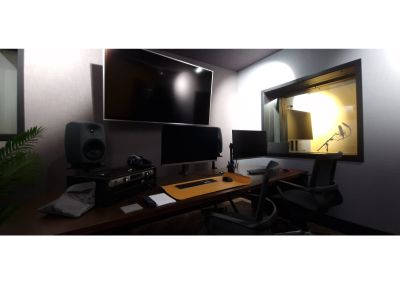Can the studio be relocated?
Leasing premises for Post Production work? Relocation or, preferably, expansion can bring the issue of dilapidation into the picture. We take a look at what this means for the acoustic architecture of a professional audio facility.
A typical lease will have a clause placing a responsibly on the tenant to return the space to the same condition that it was in originally before the lease was taken out. What does this mean for a recording studio, and what is the best way to avoid risking the business?
What is Dilapidation?
The term dilapidation refers to the responsibility of a tenant to repair/restore the condition of a premises to the condition it was in before the occupancy. This includes structural work such as windows, doors, walls, wiring, air conditioning and more. A high-quality studio requires a very specific structural architecture that you’re unlikely to find on rightmove. So you’re going to have to build it. And when the lease ends, remove it.
Competition for fashionable areas:
Areas like London’s Soho and Dublin’s Windmill lane are traditionally a hotbed for media-production studios, film and music work. The past number of years have seen interest in these areas increase from other industries and interests. These areas are now becoming chic spaces for huge international companies to set up shop. Property owners previously letting at fair prices are increasing tempted to sell up. Just recently in Dublin, the Tivoli Theatre was demolished in Dublin historic Liberties quarter in lieu of a hotel.
Creative industries are being made to adapt to the changing landscape in these areas and are being pushed back to the suburbs in some cases.
RICS Dilapidations Forum published a report that stated the following*:
Office (£ per Sq. Foot)
Industrial (£ per Sq. Foot)
Retail (£ per Sq. Foot)
This could mean that on average you could expect to pay somewhere in the region of a year’s rent in dilapidation costs. That coupled with the deposit for a new premises, a new studio build, transporting equipment and other costs could be enough to seriously challenge the strength of the business.
Challenges for Creative businesses…
Media production studios, while having many of the same assets as a regular office, have acoustic architecture, which in a traditional build is nigh-on impossible to remove without demolishing most of it.
I was not able to get any studio specific numbers, but you could expect a studio’s dilapidation costs to be significantly higher than a regular office. There would have to be some heavy-duty re-structuring to return a room designed for professional audio production back into the empty room whence it came.
When a new site has been selected, the job of re-configuring the studio to its previous state is begun.
While mixing consoles, monitors, cameras, computers and weighty racks of equipment can be unplugged and transported relatively easily somewhere else, an audio studio’s acoustic architecture often cannot be transplanted.
Studio design is often a bespoke affair, and the in some cases the construction can be sub contracted to various parties. One subbie to lay the floor, one does the walls and ceiling, another for the air con, another for the joinery, another for the electrics. This results in a perfectly acceptable outcome in most cases, but what if a relocation becomes necessary?
A solution has arrived:
Smart Studio builds studios in a way that allows for easy disassembly and reuse.
The same precision factory build that allowed for simple installation on-site also allows for a quick turnaround on relocating the components. Our install team has a complete picture of all the areas usually subcontracted out. We can remove the ceiling, walls, coil units, and floors, losing only fabrics and quilts.
We keep our standardised modules, and these are either added to or reduced in case of redeployment.
We have a consistent process no matter what space, allowing us to achieve identical frequency response, diffusion, and sound insulation, again and again, no matter where it is.
This allows users of Smart Studio to retain a core residual value from their investment and make dilapidation costs less foreboding. While you will lose some materials, but we believe up to 60% of the build can be reused, and unless some unscrupulous landlord has bought us out, we will have a team ready to make that move a little easier.

Smart Studio modular install can be demounted cleaner and quicker than a traditional build.
References:
*https://www.ibblaw.co.uk/insights/blog/dilapidations-uncovered






